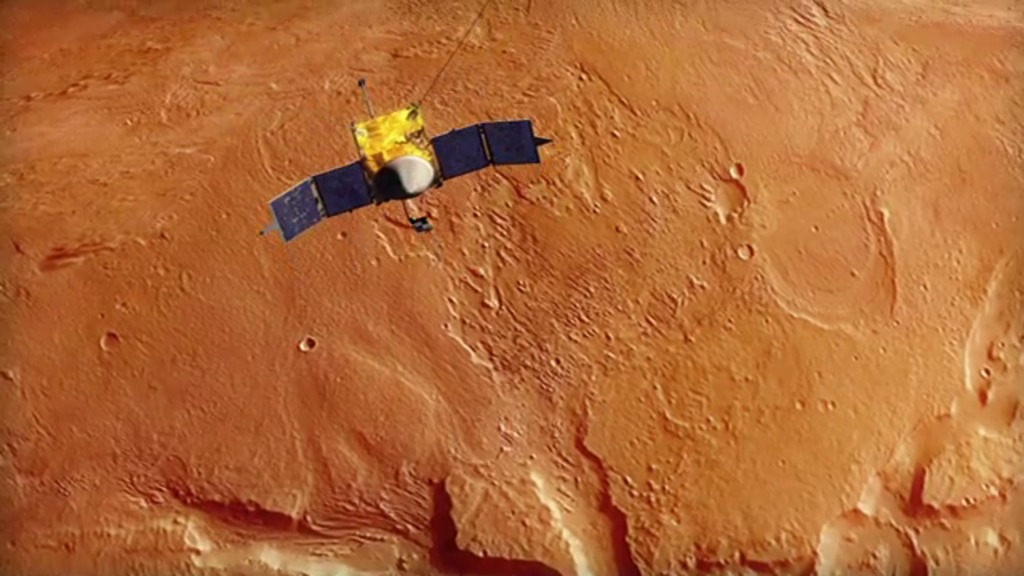Countdown To Mars
How did Mars’ climate change? How has the atmosphere been lost—and how quickly are gases escaping now? These are the questions that NASA’s MAVEN spacecraft will explore when it reaches the planet on September 21, 2014. Scientists believe Mars once had a thicker atmosphere that may have been gradually lost to space. The change would have had a considerable impact on the planet’s climate, liquid water and habitability, ultimately shaping the world we see today. Using a suite of instruments aboard the spacecraft, researchers will probe Mars’ upper atmosphere from orbit to study the processes that led to the thinning of its atmosphere over billions of years. Watch the video to learn more.

NASA's MAVEN spacecraft is due to arrive at the Red Planet later this month.
Scientist Bruce Jakosky provides an overview of the MAVEN mission in this video.

Earlier in its 4.5 billion year history, Mars is thought to have had a significant atmosphere.

As Mars lost its atmosphere over time, it slowly transformed from a warm and wet environment to a much colder and drier place.

NASA's MAVEN spacecraft will study Mars' upper atmosphere for clues about how the planet has changed.
Credits
Please give credit for this item to:
NASA's Goddard Space Flight Center
-
Animators
- Ryan Zuber (UMBC)
- Chris Smith (HTSI)
- Walt Feimer (HTSI)
-
Video editor
- Chris Smith (HTSI)
-
Interviewee
- Bruce Jakosky (LASP)
-
Producer
- Chris Smith (HTSI)
-
Scientist
- Bruce Jakosky (LASP)
-
Videographer
- Chris Smith (HTSI)
-
Writer
- Kayvon Sharghi (USRA)
Release date
This page was originally published on Tuesday, September 2, 2014.
This page was last updated on Wednesday, May 3, 2023 at 1:50 PM EDT.
